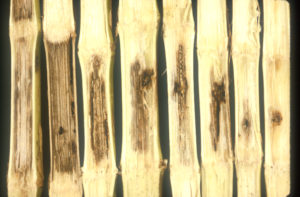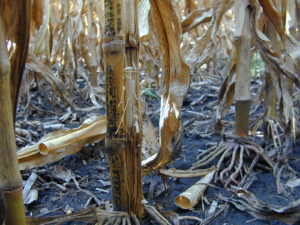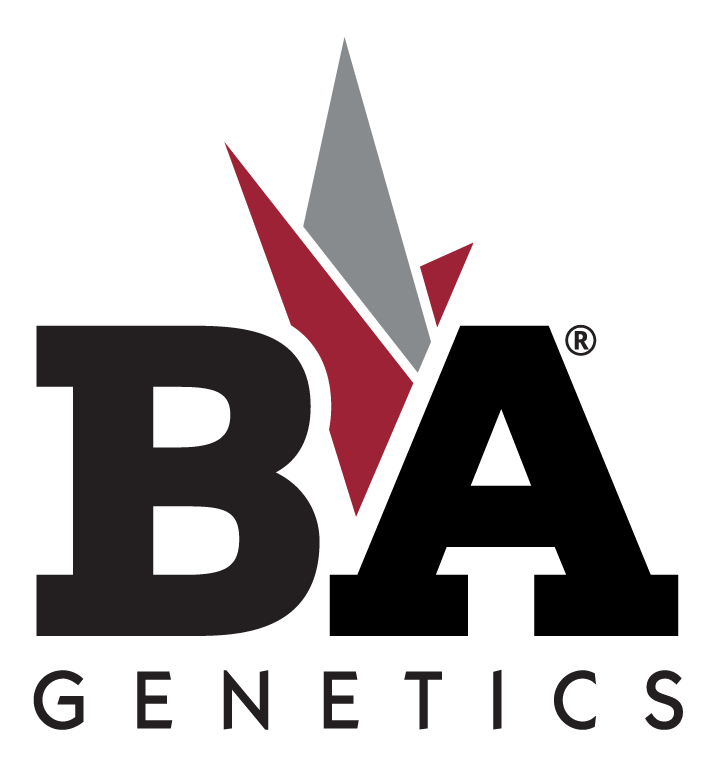Common Corn Diseases – Part 2: Stalk Diseases
Your corn, regardless of the field, is threatened by common stalk and ear disease each year. This is the second of a two-part series that looks closer at some of the most common stalk and ear disease as well as how to avoid them.
Yes, Stalk Rot Can Happen to Your Fields
Stalk rots can cause harvest loss, reduced yields, harvest issues, limited stand ability, and lodging.
Similar to ear rot, several factors determine the severity of the disease, including:
- The presence of the pathogen,
- The right environment, and
- A susceptible host, like corn.
The susceptibility of stalk diseases varies greatly by hybrid, however environments such as corn-on-corn and reduced tillage increases the risk and severity of stalk diseases. Other conditions that pose a serious risk, include: low fertility, extremely high populations, damage from wind, hail, or tillage, and a tight husk.
Fusarium Stalk Rot:
- Favored by dry weather prior to silking and wet weather after silking
- Fungal pathogen can grow on the outside of the stalk
- Pink or salmon in color inside the stalk and have a white appearance on the outside of the stalk
- Will over winter on corn residue

Diplodia Stalk Rot:
- Produces black reproductive structures on stalks known as pycnidia, which are embedded in the stalks or kernel surfaces and feel rough, similar to sandpaper
- Stalk infection usually occurs below nodes and infects the stalks through the roots, crown, or lower stems
- Common in the Midwest

Gibberella Stalk Rot:
- Pink, red or salmon in appearance and is one of the most common stalk rots
- The internal stalk will often be discolored pink or red with the presence of this pathogen
- Small black round blackish specks will appear on the surface of the stalk that easily rub off (unlike Fusarium, which cannot be rubbed off)
- Disease is favored by warm, wet conditions
- Limiting insect wounds can reduce Gibberella
- Survives in crop residue

Anthracnose Stalk Rot:
- One of the most common corn stalk rot diseases
- Can cause stalk rot, top dieback, foliar and seedling diseases
- Aggressive pathogen
- Shiny black lesions on the outer rind with black fungal growth just below the surface
- Produces fungal reproductive structures called Conidia
- Infection favors high humidity and warm temperatures, and most are infected two or three weeks after pollination.
- Wounds from weather and insect feeding increase the chance of disease infection

It’s Possible to Reduce Your Risk
One of the easiest ways to reduce the risk of stalk rot is to avoid planting corn-on-corn and take measures to limit insect wounds. Fungicide application early around v6-10 or during tasseling can reduce the severity of certain stalk rots.
The best course of action in the fight against Insect wounds is through planting SmartStax® or VT Double PRO® corn products, which can limit ear- and stalk-feeding insects. We also suggest getting every plant off to healthier start by choosing B&A Genetics hybrids with Protect ‘N Grow Seed Treatment using multiple fungicides to protect against many diseases in early development stages. Look for hybrids featuring a high tolerance to Anthracnose or other corn diseases. Feel free to reach out to the B&A Genetics team to help you make the right decisions for your fields.

